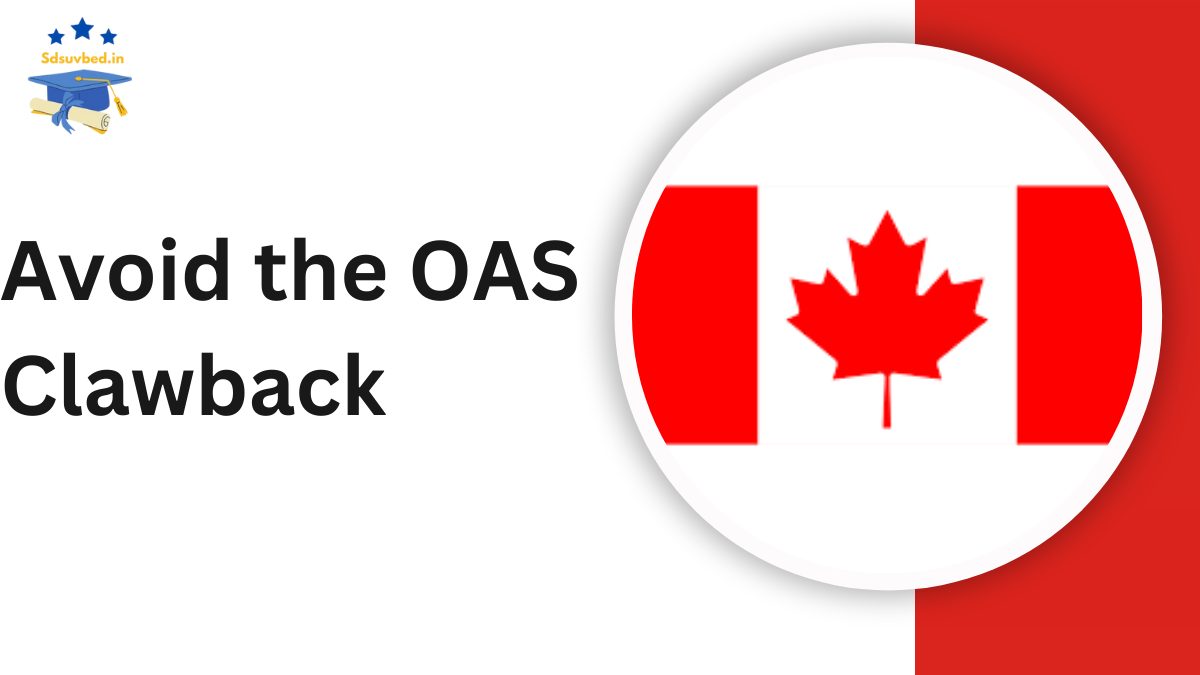The Old Age Security (OAS) clawback, officially called the OAS Recovery Tax, is a mechanism that reduces OAS payments for Canadian retirees whose income exceeds a government-set threshold. In 2025, the threshold stands at $90,977, with a reduction of $0.15 for every dollar earned above this amount.
For retirees with incomes reaching $149,000 or more, the clawback may result in a complete loss of OAS benefits, which can amount to $7,040 annually. This reduction is assessed as part of your tax return and impacts payments starting in July of the following year. Understanding how the clawback works and planning effectively can help you retain your benefits and optimize your retirement income.

Ways to Minimize or Avoid the OAS Clawback
Delay Taking CPP Benefits
One of the most effective strategies to reduce your net income and avoid the OAS clawback is to delay receiving Canada Pension Plan (CPP) benefits. While OAS payments generally begin at age 65, CPP benefits can be deferred until age 70.
Benefits of Delaying CPP:
- Reduces taxable income during your early retirement years, potentially avoiding the clawback.
- Increases your CPP payments by 8.4% per year after age 65, resulting in higher monthly payouts when you start receiving them.
Reduce Employment or Pension Income
If you are still working or receiving other pension income in your 60s, consider adjusting your earnings to stay below the clawback threshold. Options include:
- Reducing work hours or transitioning to part-time employment.
- Restructuring pension payouts to lower your annual taxable income.
Estimated OAS Clawback at Different Income Levels
| Income Level (CAD) | Clawback Rate (15%) | OAS Clawback Amount |
|---|---|---|
| $90,977 – $100,000 | 15% | $1,350 |
| $100,001 – $110,000 | 15% | $2,850 |
| $130,000 – $140,000 | 15% | $7,350 |
| $149,000+ | Full Clawback | Complete Reduction |
Maximize Tax Deductions
Reducing your taxable income is a key way to mitigate the OAS clawback. Leverage available tax deductions such as:
- Charitable Donations: Deductible donations reduce your taxable income.
- Medical Expenses: Claim eligible medical costs exceeding 3% of your net income.
- Business Expenses: If you operate a small business, ensure all allowable deductions are accounted for.
Keeping meticulous records of these expenses ensures you can claim them accurately on your tax return.
Contribute to an RRSP
A Registered Retirement Savings Plan (RRSP) is a powerful tool for reducing your taxable income. Contributions to an RRSP are tax-deductible, directly lowering your net income and helping you stay below the clawback threshold.
Key Benefits of RRSP Contributions:
- Decreases current taxable income, reducing OAS clawback risk.
- Allows your savings to grow tax-free until withdrawal.
By contributing to an RRSP during high-income years, you can strategically defer taxable income to later years when you might be in a lower tax bracket.
Additional Considerations
Spousal Income Splitting
If you are married or in a common-law relationship, income splitting can be an effective way to avoid the OAS clawback. By allocating a portion of your retirement income to your lower-earning spouse, you can reduce your taxable income while maximizing household benefits.
Tax-Free Savings Account (TFSA) Withdrawals
Unlike RRSP withdrawals, funds taken from a Tax-Free Savings Account (TFSA) do not count as taxable income. If you need access to additional funds in retirement, withdrawing from a TFSA can help you avoid exceeding the OAS clawback threshold.
Advantages of TFSA Withdrawals:
- No impact on taxable income.
- Provides financial flexibility during retirement.
Strategies to Avoid the OAS Clawback
| Strategy | Description | Effect on Income |
|---|---|---|
| Delay CPP Benefits | Postpone CPP until age 70 | Reduces taxable income |
| Reduce Employment Income | Work fewer hours or restructure pension | Lowers net income |
| Claim Tax Deductions | Maximize deductions (e.g., donations, medical expenses) | Reduces taxable income |
| RRSP Contributions | Contribute to RRSP to defer income | Decreases net taxable income |
| TFSA Withdrawals | Use TFSA funds instead of taxable income | No impact on taxable income |
FAQs
What is the OAS clawback?
The OAS clawback is a reduction in Old Age Security payments for retirees whose income exceeds the government-set threshold, currently $90,977.
How can I avoid the OAS clawback?
You can avoid the clawback by delaying CPP benefits, reducing employment income, maximizing tax deductions, or contributing to an RRSP.
When is the OAS clawback applied?
The clawback is assessed annually as part of your tax return and affects OAS payments starting in July of the following year.
Does CPP income contribute to the OAS clawback?
Yes, CPP benefits are included in your taxable income and can contribute to the clawback.
How does income splitting help avoid the clawback?
Income splitting allows you to allocate part of your income to a lower-earning spouse, reducing your taxable income and potentially avoiding the clawback.
Are TFSA withdrawals considered taxable income?
No, withdrawals from a TFSA are tax-free and do not count toward your taxable income.
Can medical expenses help reduce taxable income?
Yes, eligible medical expenses exceeding 3% of your net income can be deducted to lower your taxable income.
Should I consult a financial advisor for OAS clawback planning?
Yes, consulting a financial advisor can help you tailor these strategies to your unique financial situation for maximum benefits.
Click here to know more.
A passionate content writer specializing in creating engaging, SEO-optimized content. With expertise in blogs, web copy, and storytelling, I craft words that connect with audiences and deliver results.
